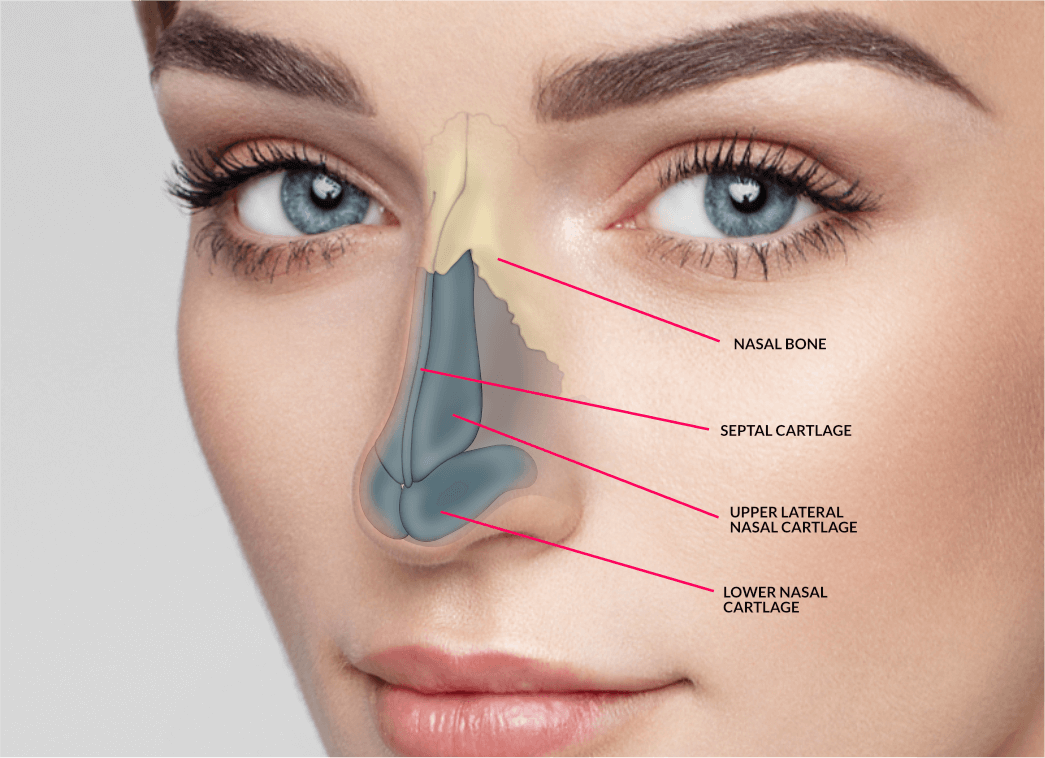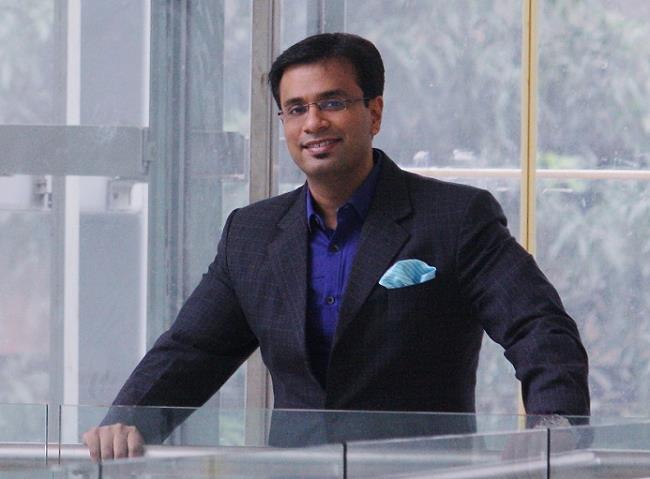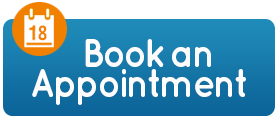Physical appearance plays a big role in who we are. This includes self-esteem, self-confidence, personality, and how we generally view our self-worth. That is why people who are perceived to be more beautiful get noticed first and even enjoy privileges that they wouldn’t have if they didn’t look the way they did.
Unfortunately, birth deformities and traumatic accidents can ruin this. Crooked nose, saggy skin, droopy eyelids, and other issues, especially on the face are a big deal, not to mention they can cause medical issues like breathing difficulties.
Thanks to surgical doctors and plastic surgeons, these accidents, and birth defects can be corrected. Rhinoplasty, to be specific, is a powerful tool to correct most nasal issues. Here is everything there is to know about a rhinoplasty clinic and procedures.
Rhinoplasty Explained
Rhinoplasty, also referred to as a “nose job,” is a medical procedure done to alter or change the shape or overall appearance of the nose. People do rhinoplasty procedures for a range of reasons, some may be for cosmetic purposes, others for health and medical purposes.
Some of the reasons for a nose job are correcting structural defects for better breathing and correcting aesthetic issues such as a crooked nose.
During a rhinoplasty procedure, the surgeon needs to access the underlying bone and cartilage, so they can make an incision either inside the nose or along the base of the nostrils. Once they access the bone and cartilage they can reshape or make the necessary adjustment to the nose to achieve the desired look.
The procedure takes a couple of hours to complete, depending on how complex it is. After the surgery, the patient may have regular visits to the doctor for follow-up appointments to ensure optimal healing.
Note that a Rhinoplasty procedure is highly an individual decision and therefore careful communication and planning between the doctor and the patient is vital throughout the process.
It is also important to find the best plastic surgeon like Dr. Debraj Shome from reputable facilities like The Esthetic Clinics, to guarantee the best results.
Rhinoplasty Procedure
Depending on the patient’s need, the surgeon can perform either of the two main types of Rhinoplasty procedure;
- Open rhinoplasty
- Closed rhinoplasty.
During the closed rhinoplasty procedure, the surgeon makes incisions inside the nostrils, through which he works to reshape the nasal bones and cartilage. This procedure has a faster recovery time but may cause scarring.
On the other hand, during an open rhinoplasty procedure, the surgeon makes a small incision across the skin between the nostrils called columella, which allows him to work on the nose. Open rhinoplasty is usually performed on more complex cases, where extensive work is needed.
The surgeon can administer general anesthesia or local anesthesia with sedation before starting the procedure to make it painless or less painful for the patient. He will then make the necessary incision and adjustments to the nose and then close the incisions and re-drape the skin over the new framework.
After the surgery, the patients may need to keep a splint on their nose for a couple of days, or at least 2 weeks to protect the new shape of their nose. They may also experience some side effects such as swelling around the nose and eyes, which can last for several weeks.
Overall, as long as the surgeon is experienced and professional, rhinoplasty is a safe and effective procedure that can improve the appearance and function of the nose. However, keep in mind that there are some risks that may be associated with it and it is important to discuss with the surgeon upfront about these risks.
Benefits of Rhinoplasty
Most patients undergo rhinoplasty procedures for two main reasons; to correct a defect from birth or an accident or for cosmetic reasons. Maybe they don’t like the shape of their nose, or they want to make it more symmetrical. Whatever the case, there are many benefits of Rhinoplasty.
Here are some of them;
- Improved appearance
Whether it is for medical or cosmetic purposes, rhinoplasty ends up improving the appearance of your nose and your overall face. It is used to repair deformities such as a bump on the nose, or a drooping tip.
A skilled surgeon can reshape and reposition the bone and cartilage and create a more aesthetically pleasing nose that complements the rest of the face, which can in turn improve a person’s self-confidence.
- Improved breathing
Besides correcting deformities on the nose, Rhinoplasty can also be used to improve structural abnormalities like collapsed nasal valves and other obstructions in the airway.
These issues can cause nasal issues like chronic congestion, snoring, and sleep apnea, which can lead to breathing problems. An experienced plastic surgeon like Dr. Debraj Shome can modify the nasal structures through a rhinoplasty procedure to help improve airflow and alleviate breathing difficulties.
This can help patients breathe more easily and comfortably, sleep better, and even improve their energy levels.
Keep in mind that rhinoplasty is just one of the many ways to improve breathing difficulties. It is not the solution to all breathing issues. Consultation with a qualified doctor is vital to evaluate and determine the appropriate procedure for an individual’s specific needs.
- Increased self-confidence
Many people take pride in their facial appearance, which has a lot if not everything to do with their overall confidence. A deformity in any part of their face takes a toll on their self-esteem and confidence.
Thanks to Rhinoplasty which can correct both cosmetic and medical issues by creating a more balanced and proportional facial appearance. When people feel good about their appearance, they are more likely to have self-confidence.
- Corrective purposes
Some people are born with deformities that affect the appearance of their noses. Others may suffer traumatic injuries, such as a broken nose, which may end up affecting the way their nose looks and overall facial appearance.
Rhinoplasty can be an effective treatment to address and correct these issues and restore normal function and aesthetics to the nose.
- Long-lasting results
One of the reasons why many people in India opt for Rhinoplasty over other treatments and surgical procedures is that the results are long-lasting. It may last for many years up to a lifetime.
However, the success of the procedure depends on various factors such as the experience of the surgeon, the patient’s anatomy and ability to heal, and their adherence to instructions. It is also important to keep in mind that some changes may occur with aging and other factors.
Recovery and Aftercare
While a rhinoplasty procedure is generally safe and effective, recovery can take weeks or even months to completely heal.
Aftercare involves keeping the surgical area clean at all times. Patients can use saline nasal sprays or irrigations to keep the nasal passages moist and prevent dryness or crusting. They should also avoid wearing glasses or anything that puts pressure on the nose for several weeks after surgery.
Patients are advised to take bed rest and avoid physical activities for at least 24 hours after the surgery. They also have to wear a splint over their nose to support the reformed nose and protect it.
Some patients experience side effects such as pain, swelling, and bruising, especially during the days that immediately follow after the surgery. This only lasts for a couple of days and can be easily managed with pain medication and cold compresses.
During this time, patients are also asked to avoid blowing their nose, as this can cause or increase bleeding and swelling. They are also instructed to avoid doing activities that stress their bodies such as heavy lifting and avoid smoking, as it can slow down the healing process or increase the risk of complications.
Taking alcohol and any medications rather than the ones prescribed may also lead to complications. Patients should follow their doctors’ instructions religiously, and attend follow-up appointments as agreed with their doctors.
The changes and results start to be visible as days pass by and the swelling and bruising start to subside. However, remember that the final results may take several months up to a year to show after the nose completely heals.
Some people experience emotional and psychological changes after rhinoplasty. Others may start to feel anxious or self-conscious about their appearance during recovery. These feelings are normal and they may sometime need to seek support from friends, family, or even professionals.
All that patients need to do for easy and faster recovery and aftercare is to follow the surgeon’s instructions carefully and allow time for the nose to heal fully.
.jpg)
Side Effects and Risks of a Rhinoplasty Procedure
Alongside the benefits of rhinoplasty come some risks and side effects. Here are some risks that a patient may experience;
- Infections
Just like with any other procedure, patients may get infections on the sites of surgery on their noses. Rhinoplasty involves making incisions in the skin and underlying tissue to adjust the nose, and these can be the entry point for bacteria.
It is important for surgeons to take precautions such as administering antibiotics, sterilizing their equipment, and performing a thorough assessment of the patients to ensure that they are ready for the procedure and can handle it.
Doctors can prescribe antibiotics if an infection occurs. However, an additional surgery may be required if the infection is chronic.
To avoid this, it is important for patients to follow their doctor’s post-operative instructions, keep the surgical site clean, and avoid touching or rubbing the nose.
- Bleeding
Bleeding is another potential risk of rhinoplasty. Sometimes the surgeon has to manipulate the nasal tissues during the surgery, which in most cases causes bleeding. This is usually controlled during the procedure, but it can also potentially happen after the procedure.
Excessive bleeding after the surgery may occur due to blood clotting disorders or complications with the surgical site. This may be a cause for concern and may even require additional surgery to address the issue.
Patients can take some measures to reduce the risk of bleeding. Avoiding aspirin and other blood-thinning medications before the surgery can help. They may also need to avoid vigorous physical activity and blowing their nose for a period of time after the surgery.
In most cases, bleeding complications are nothing to worry about and can usually be managed with prompt medication. However, patients should still be aware of this potential risk and discuss it with their surgeon even before undergoing the procedure.
- Scarring
Scarring is a common side effect of many surgeries, especially ones that involve making incisions. In a rhinoplasty procedure, the incisions are typically small and placed in inconspicuous locations. However, scarring is still a side effect that can occur.
The extent and visibility of the scar may depend on the patient’s skin type, the size and location of the incisions, and the technique of the surgeon. Patients with darker skin are generally more prone to scarring and as such, larger incisions can increase the risk of scarring.
Taking overall precautions is important for surgeons to reduce the risk of scarring. Some surgeons may use special techniques that can minimize the size and visibility of incisions, or use dissolvable sutures that do not need to be removed after the surgery.
It all comes down to their skills and experience, which is why it is important to work with a reputable clinic like The Esthetic Clinics, with reputable doctors and plastic surgeons.
Patients can also take precautions that improve healing and minimizes the risk of scarring after the surgery. They may need to avoid sun exposure, apply scar-reducing creams and ointments, and always follow their surgeon’s post-operative instructions.
It’s also important for patients to discuss scarring with their surgeon before undergoing the procedure so they know what to expect in regard to the potential risk.
- Anesthesia
Anesthesia has to be administered before the procedure to make the patient comfortable and ensure they are pain-free during the procedure. However, it is also known to carry some potential risks such as allergic reactions, heart problems, and breathing difficulties.
An anesthesiologist should perform a thorough medical evaluation to assess the patient’s overall health and identify any potential risk factors before the surgery. They also need to discuss the type of anesthesia to be used with the patient and the potential risks associated.
It is important for the doctor to monitor the patient before and after the surgery to ensure they are safe and comfortable, and can well recover from the effects of anesthesia.
Complications related to anesthesia are rare but they can still occur. Therefore, taking proper precautions and monitoring are vital to reduce the risk of anesthesia complications and ensure patients can safely undergo rhinoplasty.
- Breathing problems
If a rhinoplasty procedure is poorly performed, patients are prone to experience breathing difficulties.
Usually, rhinoplasty procedures are performed to correct nasal deformities such as correcting a nasal valve collapse to improve breathing. If the surgery doesn’t go well due to complications or poor performance, it can worsen the situation.
Taking precautions is therefore important to ensure the procedure goes as planned. Surgeons can use specialized techniques during the procedure or use computer imaging to plan the surgery and ensure that the desired result is achieved without compromising function.
After the surgery, patients are closely monitored to ensure that the healing process is progressing as expected. Follow-up appointments are also important to assess their breathing and ensure that there are no complications.
Additional surgery may be required to address a breathing problem if it does occur. It is therefore important for patients to discuss their concerns about any breathing problems with their surgeon before undergoing the procedure, especially if they are doing it for functional reasons rather than cosmetic.
- Unsatisfactory results
Both patients and surgeons dread unsatisfactory results. Things can go wrong for various reasons including unrealistic expectations, failure to properly assess the patients for any health complications, surgical complications, poor aftercare, or differences in the way the nose heals.
When a patient is unsatisfied, additional surgery is mostly the solution. The procedure usually involves making further modifications to the nose to improve its appearance or function and can be more challenging than the initial surgery.
Before the surgery, it is always important for the patient to communicate their expectations and for the surgeon to thoroughly explain the procedure, results, and potential risks. It is vital for both parties to have a clear understanding of what can realistically be achieved through the procedure.
Choosing a plastic surgeon who is experienced and has a positive track record of achieving success to perform the procedure is crucial.
Patients should inquire more about the procedure and carefully follow their surgeon’s pre and post-operative instructions. Having a clear understanding contributes to a successful surgery, promotes healing, and minimizes the risk of complications.
Cost of Rhinoplasty in Mumbai
Rhinoplasty cost in Mumbai depends on various factors. Such include the agreement between the surgeon and the patient, the location of the clinic and/ or its facilities, how complex the procedure is, the type of rhinoplasty procedure done, the surgeon’s experience, the type of anesthesia used, and any other charges for post-operative care.
While it is rare, insurance may be allowed in some cases and cut the cost. The patient should discuss with their doctor beforehand about all expenses that they will incur before, during, and after the surgery.
Also, always remember quality over cost. You will get many offers, some of which will be extremely cheap, but these are not always the best option. Inexperienced and unqualified surgeons can mess you up big time.
Consult with skilled doctors and plastic surgeons like Dr. Debraj Shome who are qualified and have a great reputation if you want great results.


